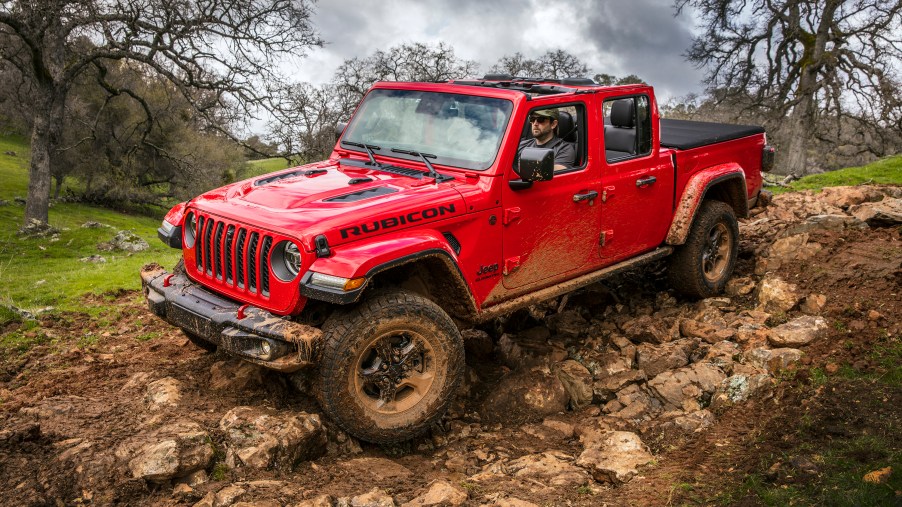
The Difference Between 4Hi, 4Lo, and 2Hi in Your 4WD Truck
Most trucks come with available four-wheel drive and for good reason. A truck is designed to be functional and able to tackle almost any job. 4WD offers better traction, power, and control when you need it most. But how does 4WD really work? And what’s the difference between each 4WD setting?
How 4WD really works
According to How Stuff Works, there are a variety of four-wheel-drive systems. Most of the time, however, when an automaker says a truck has 4WD, this means that it is a part-time system.
Vehicles with all-wheel drive can sometimes be called full-time 4WD. But no matter your drivetrain, it all works the same. Your truck has two differentials (one between the front wheels and one between the rear), which send torque and power from its transmission to the drive wheels.
Sending this power can allow for better use of traction in different situations. Your 4WD setting determines which tires and parts of the truck are receiving the most power. And each 4WD setting has its own purpose and advantages.
Most older 4WD must be manually switched between transfer cases, while new 4WD systems have electronic settings that allow you to shift while driving.
While an AWD vehicle can send all of its power to all wheels at the same time, 4WD allows you to choose where your truck will receive its power. The goal of 4WD, as quoted by the folks at McNeill Nissan, “is to get more traction when traction is hard to come by.”
The difference between 4Hi, 4Lo, and 2Hi: when to use each
Every 4WD vehicle comes with multiple modes or gears that your truck can be switched to. Each gear has its own job and its own purpose, controlling your truck’s differential and where it sends its power. Here are the settings you can use with a 4WD truck and how to use them:
2Hi: 2Hi can also simply be referred to as two-wheel drive, and it’s the most commonly used option. For people with automatic 4WD or AWD with automatic 4WD, it can be switched automatically from 2WD to 4WD when it senses slip in the wheels.
4Lo: When in 4Lo, your truck is sending torque to all four wheels, but in the low range. It’s also beneficial when you need more power for pulling heavy loads at slower speeds or climbing steep grades.
4Hi: In 4Hi, your front and rear differentials lock together, creating the ultimate traction. According to Popular Mechanics, because it does not offer the same push of torque as 4Lo, 4Hi is best for getting through a situation, not out of one.
Things to remember about using 4WD
One of the most important things to remember about 4WD systems is to always use each 4WD setting properly. According to Allstate Insurance, “you should never travel in four-wheel drive on flat, smooth, dry roads, as it will damage your drivetrain.”
It shouldn’t be used on smooth, flat, dry roads and it’s important to remember that the increased torque and traction do not mean you will stop quicker. You’ll still need to allow for ample braking time, especially in adverse conditions.


